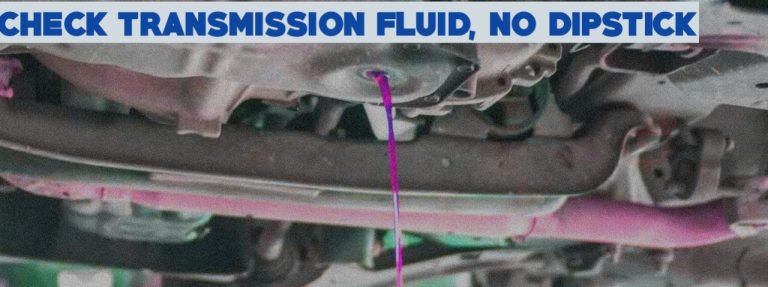Checking the transmission fluid level is one of the weekly maintenance practices to be cultivated for proper car functioning.
The transmission fluid helps lubricate the gears and bearings in the transmission and to help dissipate heat.
For this purpose, older vehicles often come equipped with a dipstick that helps car owners quickly gauge the transmission oil and know when a top-up is necessary.
However, most modern vehicles come with a closed transmission which doesn’t feature a space for a dipstick.
It’s assumed that due to the increase in technology, the manufacturers expect you to take your vehicle to a mechanic who would open the inspection plug beside the transmission.
In another case, you could’ve misplaced your dipstick and would like to check your transmission fluid level quickly.
Whatever the case, we’ll show you how to Check your transmission fluid without a dipstick.
How to Check Transmission Fluid without Dipstick?
For clarification, we initially said we’d show you how to check your transmission fluid if you’ve lost your dipstick, but I’ll advise you to get a new dipstick and save yourself the stress of going underneath your vehicle.
READ > A Complete Guide on How to Read Oil Dipstick
You can proceed with this guide if you’ve confirmed that your car was built with a sealed transmission and you don’t want to visit a mechanic.
All you’ll need to check your transmission fluid without a dipstick is a wrench, a glove, and an oil drain pan.
1. Find the inspection plug and the fill plug
Cars that don’t have a dipstick come equipped with an inspection plug and a fill plug as a replacement.
As the name implies, the fill plug is the hole where you pour transmission fluid. Meanwhile, the inspection plug is where the excess flows from.
You can refer to your manufacturer’s manual to ensure the location, but the inspection plug is mainly beside the transmission.
If you’re having difficulty locating the inspection plug and fill, you can use YouTube or Google search for suggestions.
2. Warm up the car
To get the correct transmission fluid reading, you must get your car to the proper temperature.
A temperature of at least 85°C can be achieved by driving the car with D or L2 for some minutes.
Also, check your manufacturer’s guide for the ideal fluid temperature. You can make use of an OBD-II scanner to get the correct reading.
3. Park your car on a flat surface
Now, please park your car on a flat surface and leave it idle. This will help you get the correct reading.
However, if you want access underneath your car while flat, then you can lift your vehicle equally on all sides.
4. Open the inspection plug
Wear protective gloves to prevent burns and keep your face afar for this step.
Also, put an oil drain pan below the inspection plug to hold excess fluid from spilling to the ground.
Once the ground is set, carefully use a wrench to loosen the inspection plug.
5. Gauge your transmission fluid
You can use the below factors to gauge your transmission fluid level.
When there’s transmission fluid overflow: If fluid outflows when you open the inspection plug, it means that the fluid was overfilled. Wait for the fluid level to gauge by removing excess oil.
When transmission fluid doesn’t flow: If oil doesn’t flow out when you open the plug, then it’s because the fluid level is below the gauge. You can add more fluid and wait for excess flow to ensure a higher fluid gauge.
When a black or dark brown fluid flows out: If the fluid changes color to black or dark brown, you’ll need to perform a total fluid replacement. You should immediately drain the system and top it up with fresh transmission fluid.
6. Close the Inspection Fluid
Once you’ve ensured the fluid level is gauged, tighten the inspection plug, and that’s it.
Symptoms of a low Transmission Fluid
A low-transmission mission fluid shows different signs for manual and automatic vehicles; we’ll cover both below.
- Grinding noise while changing gears
- Burning smell from the transmission
- Rough shifting
- No drive engagement
- Noisy transmission
- Transmission slips while accelerating
- Oil leaks
FAQs
Why do some cars not have a transmission dipstick?
Car manufacturers often remove the transmission dipstick as a form of damage control, making it possible to be done by only a mechanic.
Some drivers often overfill the transmission reservoir or pour the wrong fluid into the system.
How do you know if your transmission fluid is low?
You can check the level of your transmission fluid using a dipstick. Insert it into the reservoir and read the markings on the dipstick.
Here’s how to appropriately read a dipstick.
As an Amazon Service LLC Program Associate, V. Auto Basics earns from qualifying purchases. See Our Affiliate disclaimer.
